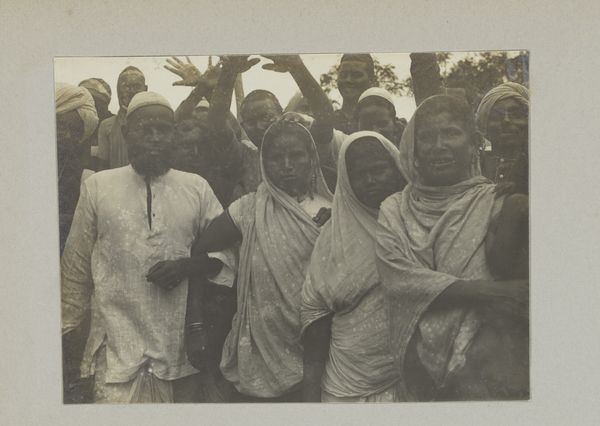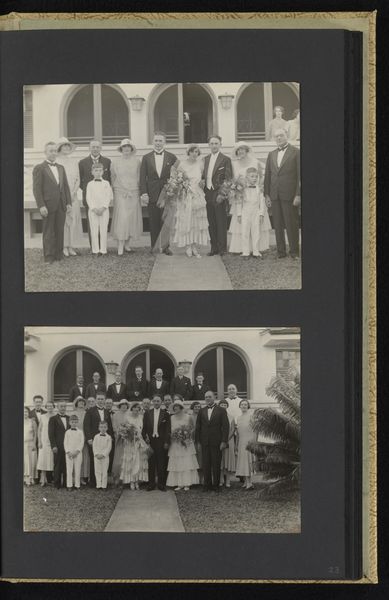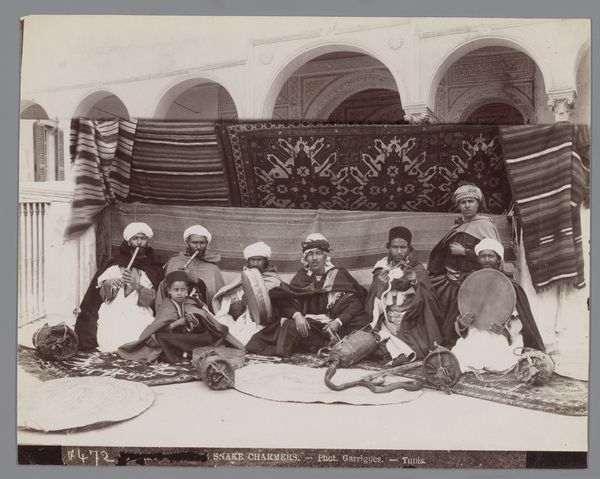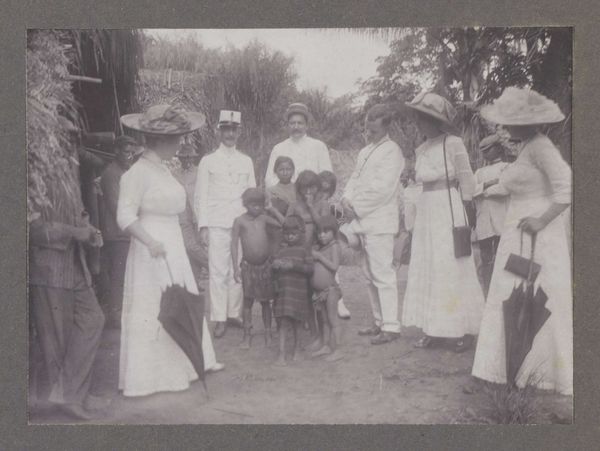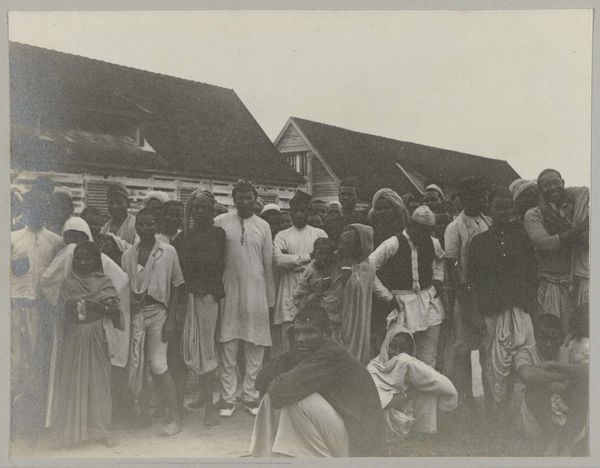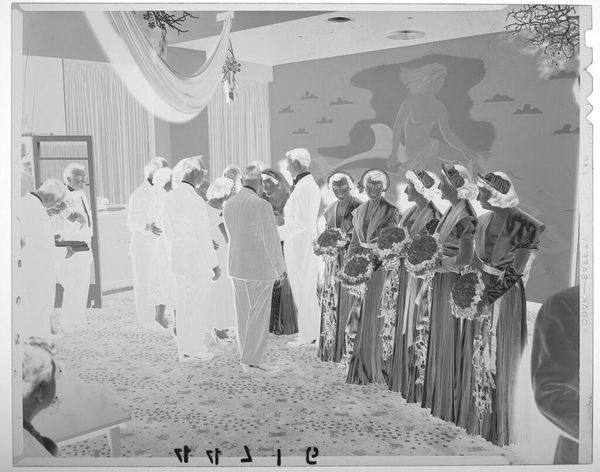
#
aged paper
#
toned paper
#
light pencil work
#
muted colour palette
#
personal sketchbook
#
underpainting
#
muted colour scheme
#
watercolour illustration
#
mixed media
#
watercolor
Dimensions: height 90 mm, width 135 mm
Copyright: Rijks Museum: Open Domain
Curator: Oh, this gives me such a feeling of stepping into a cherished, private world. There’s something wonderfully intimate about "Vijf Surinaamse vrouwen," by Eugen Klein, likely created sometime between 1900 and 1910. The aged paper just whispers stories. What jumps out at you? Editor: My immediate impression is the women’s palpable solidarity. The casual embrace shared by some suggests a sense of sisterhood. Given its historical context, though, I’m curious to understand how the artist framed and perhaps even influenced the representation of these Surinamese women. Curator: It’s that "knowing glance" among them, isn’t it? It really invites speculation. The artist worked with watercolour illustration and some mixed media. And it feels more like peeking into a personal sketchbook than viewing a formal portrait. The muted colour palette feels quite gentle, like an old memory. Editor: Indeed, that gentleness almost feels at odds with the colonial dynamics at play during this period. Were these women portrayed as ethnographic subjects or were they given space to express agency? The title itself, translated to “Five Surinamese Women,” feels somewhat detached, glossing over their individual stories. Curator: True, it leaves one craving names, individual narratives. Still, there’s something so lovingly rendered in their features, a light touch. And look at the fabrics, how delicately the patterns are suggested! The underpainting definitely helps with this atmospheric effect. I imagine the artist really studied each woman closely. Editor: Absolutely, the artist's attention to detail regarding their clothing speaks volumes about cultural expression and adaptation within specific socio-economic constraints. However, let's be mindful of interpreting historical artwork through contemporary sensibilities alone; we must also remember the legacy of imperialism embedded in such depictions. Curator: Exactly, it’s a beautiful, thorny thing, this artwork. A little visual poem open to so many interpretations. Thanks for lending your eye to it! Editor: Thank you for the close read. This piece is a potent reminder of how art serves both as a historical record and as a reflection of complex power dynamics.
Comments
No comments
Be the first to comment and join the conversation on the ultimate creative platform.


